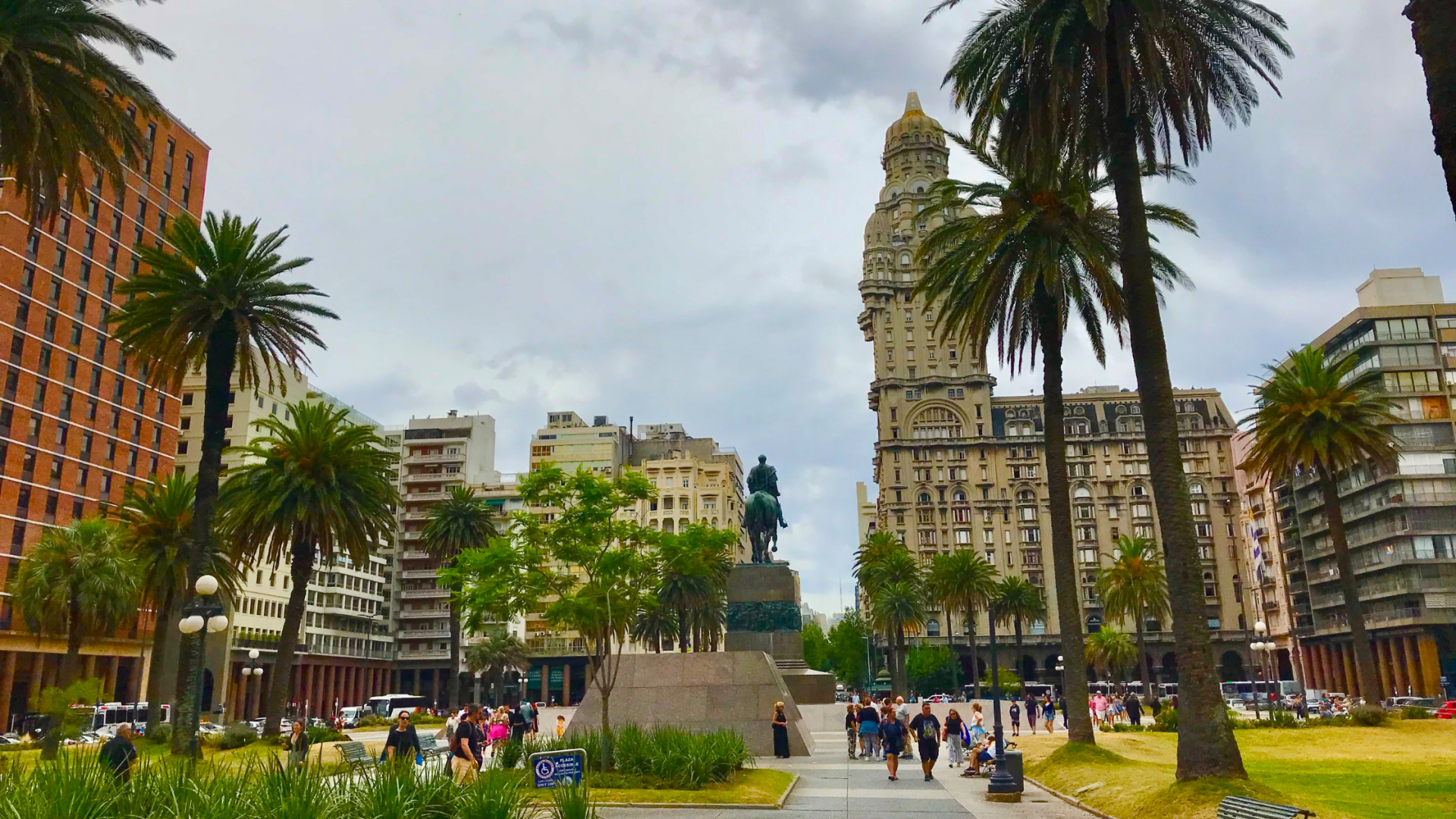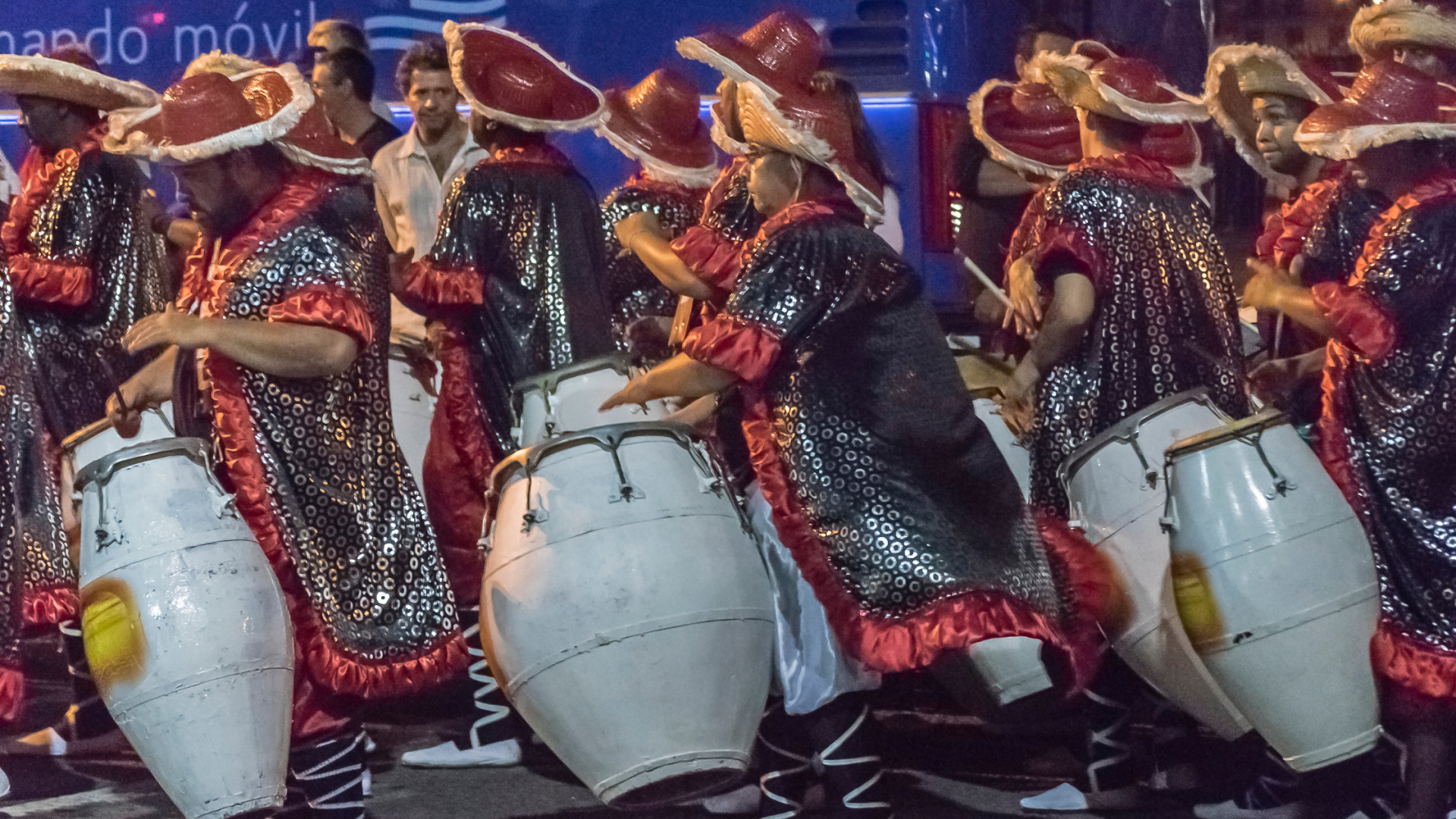Feb 11
/
Shayna Stewart, Spanish and English Instructor
Festival Culture Series: Carnaval in Uruguay
For this installment of the Freestyle Languages Culture Series, we’ll be looking into celebrations 🎉 and festivals 💃 around Latin America. I thought, what a better way to open the door to fiestas than through talking about a record-holding celebration in one of my personal favorite Spanish-speaking countries. Let’s dive in!
When you hear the word Carnaval, what do you think of? 🤔
It’s not hard to envision grand parades of huge dance troupes of people dressed in brightly colored bodysuits, lined with feathers and sequins. Percussive rhythms permeate the air, lofting high with smells of fired-up grills, while everyone—and I do mean everyone—has taken to the streets to be a part of the action.
When you hear the word Carnaval, what do you think of? 🤔
It’s not hard to envision grand parades of huge dance troupes of people dressed in brightly colored bodysuits, lined with feathers and sequins. Percussive rhythms permeate the air, lofting high with smells of fired-up grills, while everyone—and I do mean everyone—has taken to the streets to be a part of the action.
Empty space, drag to resize
Let’s talk about that record-holder I mentioned earlier. Nestled between two South American giants lies a small country of only 3 million people. Uruguay, and its capital city Montevideo, are often overshadowed in the carnival conversation with Rio de Janeiro only a little more than 1,000 miles (1,609.34 km) to the north. However, it’s in this hilly coastal country where you can find the longest carnival celebration in the world.
Lasting 40 consecutive days, Carnival in Uruguay is certainly a one of a kind way to celebrate. Carnival as a whole is a unique blend of many cultural influences, and each country’s individual celebrations are no different.
Lasting 40 consecutive days, Carnival in Uruguay is certainly a one of a kind way to celebrate. Carnival as a whole is a unique blend of many cultural influences, and each country’s individual celebrations are no different.


A main feature of the Uruguayan Carnival are the sounds of candombe. Candombe is a music and dance style that originated in the 1800s by and for members of the African diaspora in Uruguay and Argentina. It’s characterized by heavy percussive beats played on different sized tambores (drums). 🪘
Each neighborhood has their own candombe group and throughout the 40-day celebration you will hear the drums battling it out on the streets below. Candombe is so important for Uruguayan culture that UNESCO has added this music style to the list of Intangible Cultural Heritage of Humanity.
Each neighborhood has their own candombe group and throughout the 40-day celebration you will hear the drums battling it out on the streets below. Candombe is so important for Uruguayan culture that UNESCO has added this music style to the list of Intangible Cultural Heritage of Humanity.
Another fascinating feature of the Carnaval Uruguayo, are the Murgas. Murgas are performances of musical theater, usually performed by men in the capital city of Montevideo. During the show the actors are dressed in elaborate costumes on stages, or tablados, set up throughout the city, and sing a series of comical songs with a small band accompaniment.
These plays are meant to be light-hearted and satirically poke fun at the current events of the city. Historically, Murgas have also been used as a form of popular resistance to highlight injustices within the community.
Empty space, drag to resize
Un poquito de español
Hay que ver para creer = You have to see it to believe it
fiestero/fiestera= party person
¿Dónde está la fiesta? = Where is the party?
fiestero/fiestera= party person
¿Dónde está la fiesta? = Where is the party?
El Carnaval Uruguayo is a truly unique and captivating experience. With its roots in the fusion of different cultural traditions, the Uruguayan Carnival stands out for its vibrant music and performances. If you have the opportunity to visit Uruguay during the second week of January until the end of February, make sure to take part in the festivities and witness the longest carnival celebration in the world. Join the lively crowds, feel the pulsating beats of the drums, and immerse yourself in the rich cultural heritage of this remarkable country.
Want free resources to learn more Spanish? Click here.
Want free resources to learn more Spanish? Click here.
About the Author: Shayna Stewart
Shayna started her journey abroad living in the Caribbean where she began to learn Spanish to communicate with the multilingual community that surrounded her. From there, she traveled further South through Central and South America, not stopping until she reached Buenos Aires, Argentina where she received her CELTA certification. Already holding a B.A. in Anthropology from Oregon State University, her English teaching certificate allowed her to not only pick up pieces of all the places she visited, but now she could offer something useful to those she met along the way.
Learn more
Shayna started her journey abroad living in the Caribbean where she began to learn Spanish to communicate with the multilingual community that surrounded her. From there, she traveled further South through Central and South America, not stopping until she reached Buenos Aires, Argentina where she received her CELTA certification. Already holding a B.A. in Anthropology from Oregon State University, her English teaching certificate allowed her to not only pick up pieces of all the places she visited, but now she could offer something useful to those she met along the way.
Learn more
Freestyle Languages
Language learning your way.
